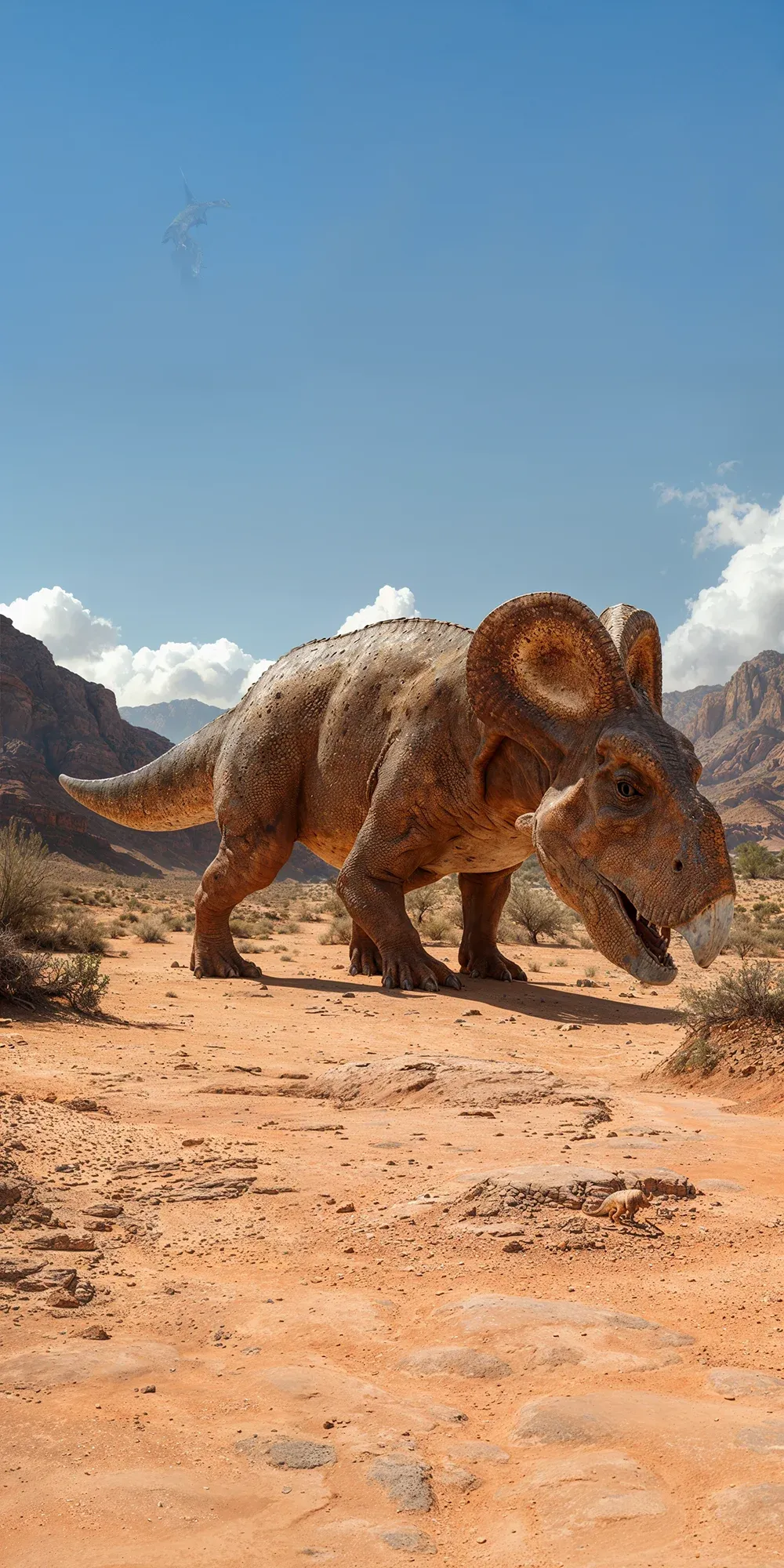The Protoceratops
The Protoceratops, a herbivorous dinosaur, roamed the earth during the Late Cretaceous period. It was a small, quadrupedal creature with a beak-like mouth, a frill on its neck for display, and a bony projection on its head. Its body was covered in scales, and it had sharp claws on its feet for defense.

| Protoceratops | |
|---|---|
| Size | Up to 6 feet in length (1.83 meters) |
| Weight | Around 400 pounds (181 kilograms) |
| Speed | 20-25 mph (32-40 km/h) |
| Key Strength | Thick skull for protection |
| Biggest Weakness | Small size and lack of offensive weapons |
| Scientific Name | Protoceratops |
| Family | Protoceratopsidae |
| Habitat | Plains, deserts |
| Geography | Mongolia |
| Diet | Herbivorous |
| Lifespan | 10 years - 15 years |

The Protoceratops
The Protoceratops, a herbivorous dinosaur, roamed the earth during the Late Cretaceous period. It was a small, quadrupedal creature with a beak-like mouth, a frill on its neck for display, and a bony projection on its head. Its body was covered in scales, and it had sharp claws on its feet for defense.
Fun Fact: Protoceratops is known for its role in the famous "Fighting Dinosaurs" fossil, where it is depicted locked in combat with a Velociraptor.
| Protoceratops | |
|---|---|
| Size | Up to 6 feet in length (1.83 meters) |
| Weight | Around 400 pounds (181 kilograms) |
| Speed | 20-25 mph (32-40 km/h) |
| Key Strength | Thick skull for protection |
| Biggest Weakness | Small size and lack of offensive weapons |
| Scientific Name | Protoceratops |
| Family | Protoceratopsidae |
| Habitat | Plains, deserts |
| Geography | Mongolia |
| Diet | Herbivorous |
| Lifespan | 10 years - 15 years |
Protoceratops Matchups
We use AI to simulate matchups between the Protoceratops and other animals. Our simulation considers size, strength, and natural predatory behaviors to determine the most likely outcome.
Protoceratops: Diet, Predators, Aggression, and Defensive Behaviors
What did Protoceratops eat?
Protoceratops were herbivorous dinosaurs that primarily fed on plants such as ferns, cycads, and other vegetation that was abundant in their habitat during the Late Cretaceous period. They had beaked jaws for stripping leaves and tough plants, and their teeth were suited for grinding plant material.
Did Protoceratops have any predators?
Protoceratops faced threats from predators such as Velociraptors, which were pack hunters and relatively fast and agile. Fossil evidence suggests that Protoceratops may have been preyed upon by these smaller, swift predators.
Were Protoceratops aggressive?
Protoceratops were not known to be particularly aggressive dinosaurs. They were generally peaceful herbivores that likely lived in herds for protection against predators. However, they may have displayed aggression when defending themselves or their young.
Did Protoceratops fight?
Protoceratops did not engage in battles with others of their kind for territory or mating rights. However, they may have fought in self-defense against predators or during intra-species competition for resources.
How did Protoceratops defend themselves?
Protoceratops had various physical adaptations for defense, including their sharp beaks and teeth for biting, their frill for intimidation or protection, and possibly their strong hind legs for kicking. They may have also relied on their herding behavior for safety in numbers.
What was Protoceratops's biggest weakness in a fight?
Protoceratops's biggest weakness in a fight may have been its relatively small size compared to some predators like Velociraptors. While they had defensive adaptations, they may have struggled against larger or more powerful predators that could overpower them in a direct confrontation.
Fun Fact: Despite its frill-like structure, research suggests that the Protoceratops may have used its neck frill not only for display but also as a means of thermoregulation.
Fun Fact: The Protoceratops is believed to have been a social animal, based on the discovery of large bone beds containing many individuals grouped together, indicating herd behavior.










